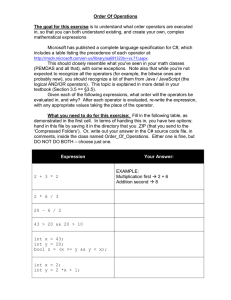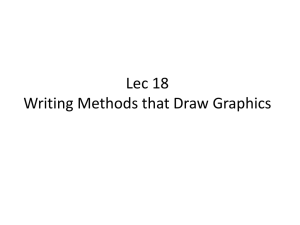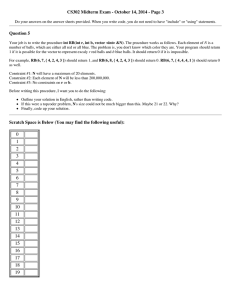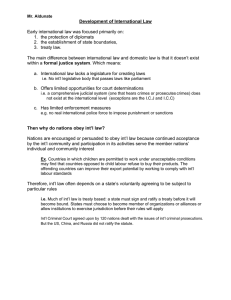Halstead's Software Science Explained
advertisement
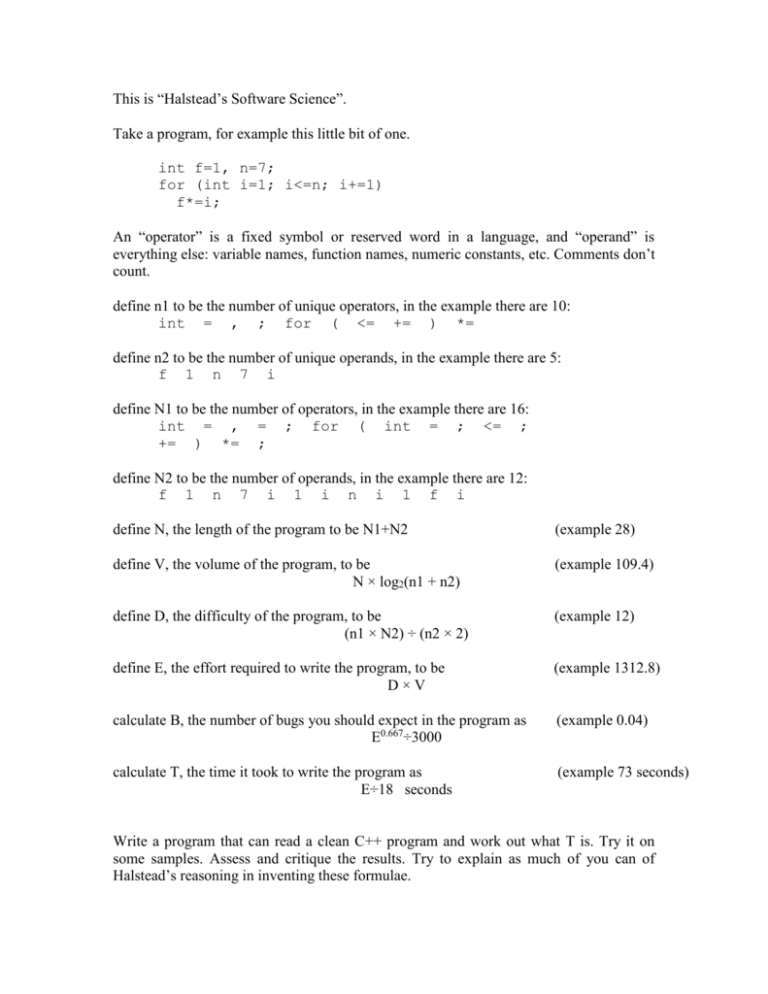
This is “Halstead’s Software Science”. Take a program, for example this little bit of one. int f=1, n=7; for (int i=1; i<=n; i+=1) f*=i; An “operator” is a fixed symbol or reserved word in a language, and “operand” is everything else: variable names, function names, numeric constants, etc. Comments don’t count. define n1 to be the number of unique operators, in the example there are 10: int = , ; for ( <= += ) *= define n2 to be the number of unique operands, in the example there are 5: f 1 n 7 i define N1 to be the number of operators, in the example there are 16: int = , = ; for ( int = ; <= ; += ) *= ; define N2 to be the number of operands, in the example there are 12: f 1 n 7 i 1 i n i 1 f i define N, the length of the program to be N1+N2 (example 28) define V, the volume of the program, to be N × log2(n1 + n2) (example 109.4) define D, the difficulty of the program, to be (n1 × N2) ÷ (n2 × 2) (example 12) define E, the effort required to write the program, to be D×V (example 1312.8) calculate B, the number of bugs you should expect in the program as E0.667÷3000 (example 0.04) calculate T, the time it took to write the program as E÷18 seconds (example 73 seconds) Write a program that can read a clean C++ program and work out what T is. Try it on some samples. Assess and critique the results. Try to explain as much of you can of Halstead’s reasoning in inventing these formulae.


